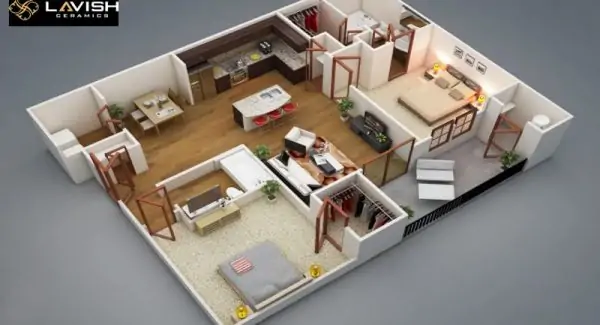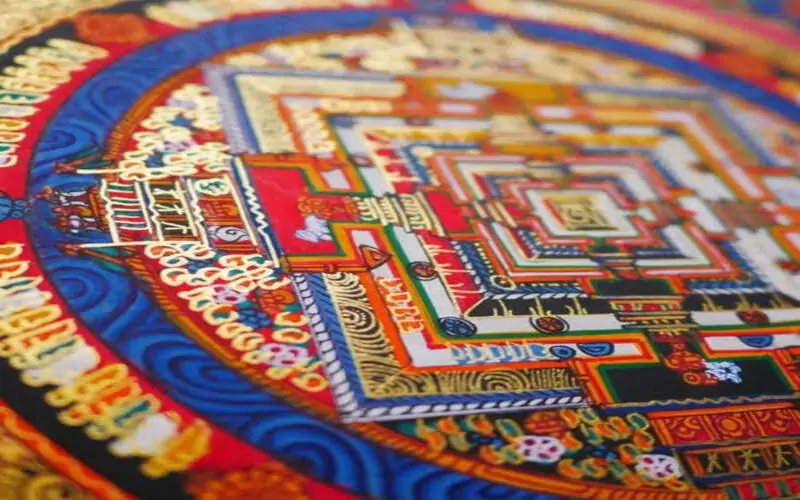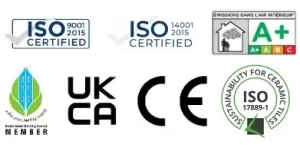Browse products by
Filter By Type
Filter By Finish
Filter By Look
Filter By Application
Filter By Type
Filter By Look
Filter By Application
Filter By Size
Vastu Shastra
Jun 2021
VASTU SHASTRA: THE SCIENCE OF ANCIENT INDIAN ARCHITECTURE
The “VASTU” discipline represents science of Vedic architecture for building design and home furnishings in ancient India. It has its origins in the Vedas, one of the oldest spiritual texts of humankind, and was first seen in Atharva Veda around 2000 BCE.
“VASTU” is a darshan, science, or discipline that deals with architecture and design of buildings to create a harmonious environment for living – which encompasses both physical structures as well as their inhabitants. The principles emphasize balancing energy and life force through spatial organization and appropriate furnishings to generate healthful conditions for all occupants.
SIGNIFICANCE OF “VASTU” IN ARCHITECTURE
Vastu’s old Indian tradition instructs us to avert our attention from objects and examine our space thoroughly first, to develop sensitivity towards these areas and energy. Moreover, Vastu ideology in architecture and design tells us to be flexible in our choices and to express our originality in terms of design by listening to our inner voice. To take into account the distinctiveness and originality of each person, and thereby come to an ideal solution for each occupant.
The basic premise is that the design and orientation of one’s home or workplace affect the residents’ or workers’ fortune and health. Vastu architecture considers many different factors such as height, slope, landscape, sunrise, and set points of view. A good “VASTU” designer will analyze these perspectives with a person who has never visited the property before because they will experience it in a different way than someone who lives there.
According to “VASTU” it is important to understand the design of the building site and selecting materials and colors accordingly, as they crucially impact the psyche. Ancient doctrines recommend opting for a sturdy land base and a regular layout shape.
To start, make it as light as possible on the north-eastern side by creating a garden with fountains and ponds, and an ornate road with sand-colored pebbles and stones. It is preferable to put aromatic flowers and herbs in the northwest of the garden.
“VASTU” emphasizes that sunlight is essential to the positive energy in every house. Furthermore, access to adequate sunlight will result in the extermination of germs and bad odor. The door of the house should not be in the south. As the South is the doorway to the Nether Realm, it pulls in negative energy, and its infrared solar rays may affect our health too. The door should ideally be positioned from north to northeast.
Ancient doctrines recommend we use eco-friendly materials in construction, also keep the types of material to a minimum. It is believed that different types of construction material may weaken the overall structure. In addition to eco-friendly materials like stone, and wood, clay is known to be a great construction material that’s been around since ancient times in its fired form of bricks, ceramic tiles, and porcelain tiles. Thanks to their good thermal qualities and non-toxic nature, they are conducive to both indoor and outdoor designs as floor covering, wall covering, and roofs, allowing a uniform flow of energy.
VASTU OF THE KITCHEN
The Lord of Fire — Agni — prevails in the southeast direction of the house, according to “Vastu shastra”, which implies your kitchen should ideally be placed in the southeast direction. If you cannot do that for whatever reason, the north-west direction is also okay. For colors, “VASTU” recommends hues of green, turquoise, yellow, orange, pink, earth, and soft red in floors, walls, and ceilings; It is important to avoid black and white.
VASTU OF THE LIVING ROOM
The most important activities in a home are centered in the living room. When guests come for social occasions, they give a good (or unfavorable) first impression. Therefore, it’s important to make sure the living room is well-organized. The living room should face east, north, or northeast, according to “VASTU.” However, a living room facing the northwest is also acceptable. Heavy furniture is best suited in the southwest or west of the living room.
Avoid having irregularly shaped rooms or circular rooms, instead, choose rectangular or square rooms with as little furniture as possible. The central space of the rooms shouldn’t be allocated for lighting. For flooring and walls: white, yellow, light, dark blue, and green colors are to be used; red and black must be avoided.
VASTU OF THE BEDROOM
According to “VASTU” for bedrooms, heavy objects such as cupboards and almirahs should be placed towards the south, south-west, or west direction. The head of your bed should face south & if you have a multi-storeyed house, the bedroom would be well suited upstairs. The most suitable colors for bedroom floors and walls are pink, blue, and green.
VASTU OF THE BATHROOM
A clean bathroom and toilet that follow “VASTU” Shastra principles can help you achieve a lot of things, from removing negativity to improving your general health and happiness. The bathroom should be in the south-eastern corner, on the east side of the home, according to old Vedic tradition. Because this is the direction of the sun’s rays at dawn, when we first wake up, thus this position is considered best. The bathroom door must never be situated in front of the house’s main door or facing the dining room entrance, and the floors and walls should be painted with soft & light colors like white or sky blue; red and black should be avoided.
VASTU FOR THE OUTDOORS
Planning and arranging a garden according to “VASTU SHASTRA” will help you feel better while also securing your health and prosperity. An outdoor garden brings us closer to nature by exuding a relaxing and enjoyable serenity. Growing plants according to the projection of sunlight in your garden fosters refreshing qualities for you & the other occupants. Many plants are recommended here, “Tulsi Plant” being the primary!
For thousands of years, the traditional Hindu system of architecture “VASTU SHASTRA” has helped millions around the world tap into its energizing qualities. Its ability to alter moods and ability to project positive effects onto humans has helped it gain even more exposure. By now it must be clear, that adopting this ancient practice in your next project may do wonders!
LAVISH’S STONE-LOOK PORCELAIN TILES, WOOD-LOOK PORCELAIN TILES & MARBLE-LOOK PORCELAIN TILES are largely made of eco-friendly/sustainable materials. Having an appropriate proportion of natural elements like earth, air, fire, air, and water in them; our products are free from toxic substances, are non-allergenic, and antibacterial. Use these according to the “VASTU” principles and observe joy, peace, and prosperity around you!
Similar Articles


That which is unique is always rare and special, so is with the finesse of Lavish tiles. Lavish is synonymous with excellent quality tiles that define the beauty of a well tiled space. One of the largest manufacturer and exporter of ceramic tiles, wall tiles and floor tiles, double charge vitrified tiles, polished glazed vitrified tiles, glazed vitrified tiles and digital tiles, Lavish is famous for adding that sense of grandeur and splendor through sheer product quality.








